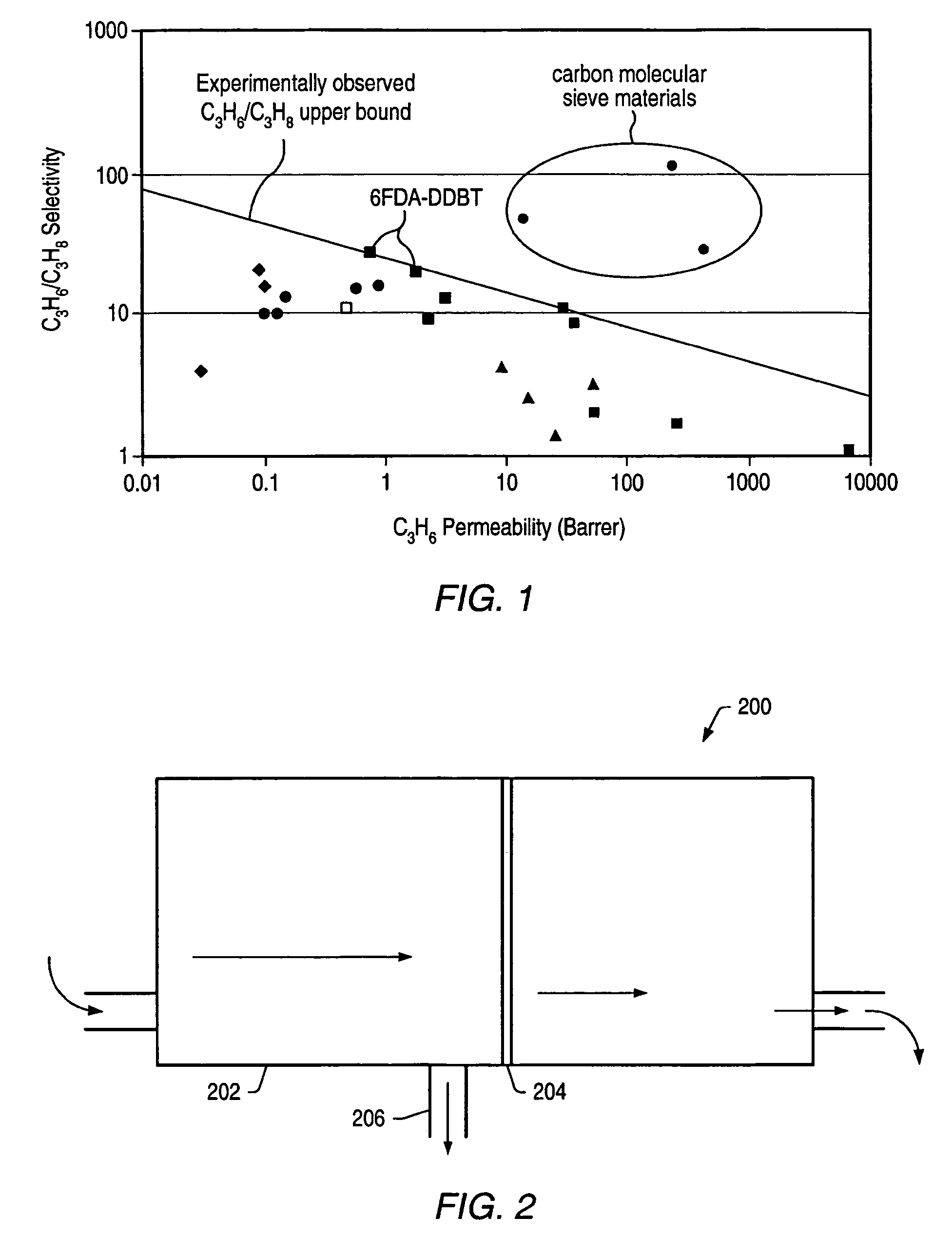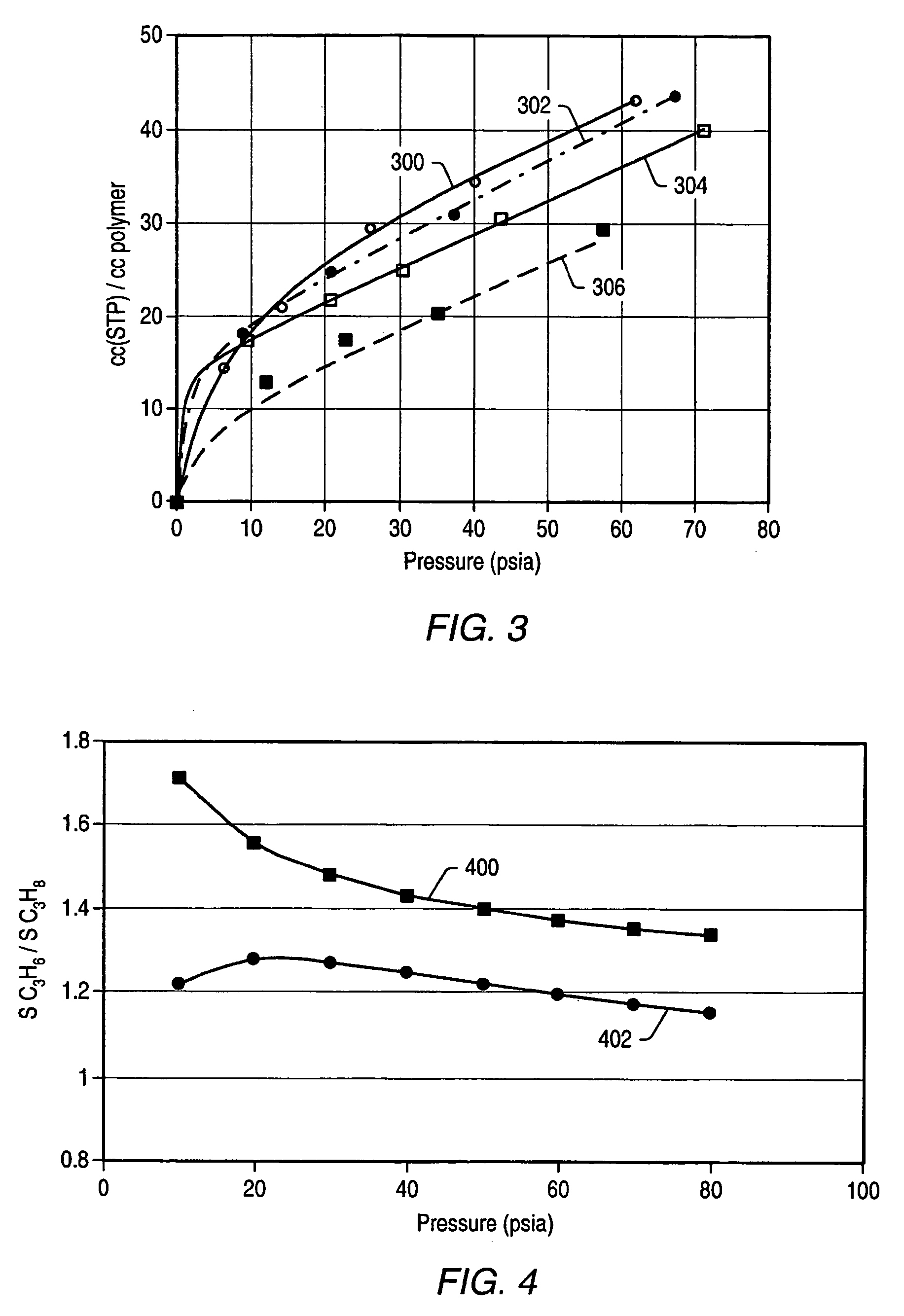Dithiolene functionalized polymer membrane for olefin/paraffin separation
a functionalized polymer and olefin technology, applied in the field of polymer membranes, can solve the problems of difficult material engineering manipulation of parameters, large practical problems of fixed site facilitated membranes, and high cost and energy consumption, and achieve the effect of optimizing the yield of purified components and improving the separation of components
- Summary
- Abstract
- Description
- Claims
- Application Information
AI Technical Summary
Benefits of technology
Problems solved by technology
Method used
Image
Examples
examples
[0108]Synthesis Procedure of 6FDA-6FpDA
[0109]All monomer materials were purified before the polymerization reaction. The 6FDA dianhydride and the 6FpDA diamine were each sublimed twice. The monomers were stored separately under high vacuum. For the synthesis of the polyimides in this study, chemical imidization was performed. In a moisture free flask with nitrogen inlet and magnetic stirrer, the diamine monomer was dissolved in N,N-dimethyl acetamide (DMAc) and the 6FDA dianhydride dissolved in DMAc was added dropwise at room temperature. The 20–25 wt % solution was stirred 6–8 h. Thereby high molecular polyamic acids were formed. The imidization was performed by the dehydration of the polyamic acids by adding a large excess of triethylamine and acetic anhydride to the reaction mixture and stirring 2–3 h at 323 K and 10–20 min at 373–383 K. After cooling to room temperature, the highly viscous reaction solution was slowly poured into methanol. The precipitated polyimide was homogeni...
PUM
| Property | Measurement | Unit |
|---|---|---|
| feed pressure | aaaaa | aaaaa |
| temperature | aaaaa | aaaaa |
| temperatures | aaaaa | aaaaa |
Abstract
Description
Claims
Application Information
 Login to View More
Login to View More - R&D
- Intellectual Property
- Life Sciences
- Materials
- Tech Scout
- Unparalleled Data Quality
- Higher Quality Content
- 60% Fewer Hallucinations
Browse by: Latest US Patents, China's latest patents, Technical Efficacy Thesaurus, Application Domain, Technology Topic, Popular Technical Reports.
© 2025 PatSnap. All rights reserved.Legal|Privacy policy|Modern Slavery Act Transparency Statement|Sitemap|About US| Contact US: help@patsnap.com



